Vetting Valley venues: A look at potential interim arena solutions for the Coyotes
If team has to leave Glendale after 2021-22 season, local options are limited
Welcome to the AZ Coyotes Insider newsletter. I generally publish stories four to six times per week. Thanks for supporting independent, accountable journalism.

The Coyotes sent an email to their corporate partners, season ticket holders and key stakeholders on Friday evening from team president and CEO Xavier Gutierrez.
I already examined the genesis of this long-expected breakup in a story on Thursday. That paragraph near the bottom of Gutierrez’s letter that addresses the team’s interim arena solutions is where I am turning my attention today.
Many of you have reached out — either in the comments section of my previous story, via email or via Twitter — with suggestions for Valley venues. Some of the suggestions were in jest. Some of them were predictable relocation options, some of them were just off base (as were some media reports), and some were on target.
To clear things up, I decided to explore the local options. I’m not going to get into relocation options because I don’t think that is currently on the table, based on my conversation with commissioner Gary Bettman and other sources. Much of the team’s future hinges on the team’s bid to build an arena in Tempe, on the site of the city’s public works and compost yard at Priest Drive and Rio Salado Parkway. Those bids are now due on Sept. 2, after the initial date was moved back. The Coyotes bid (and potentially others) will lay bare the viability of such a venture. In the meantime, here’s a look at those interim arena options.
Possibilities
Arizona Veterans Memorial Coliseum
Location: 1826 W. McDowell Road, Phoenix (just north of the I-10 freeway).
Capacity for hockey: 13,730
Pluses: The Coliseum is an architectural icon in the Valley. Its sports history is rich and deep. It was the original home of the Suns, it hosted the Valley’s first pro hockey team, the Roadrunners, and all manner of minor pro hockey teams including the WCHL’s Phoenix Mustangs and Roller Hockey International’s Phoenix Cobras (yes, I covered some of their games). The Coliseum has also hosted indoor soccer’s Arizona Thunder, World Team Tennis’ Phoenix Racquets, it has hosted roller derby, pro wrestling, truck pulls, it sheltered evacuees from Hurricane Katrina, and most recently, it hosted a clown show, er, election audit.
Minuses: The Coliseum is old and it shows its age. The Coyotes would have to put a significant amount of money into the arena just to make it workable, including an ice plant that is up to NHL standards. There are no luxury suites, the capacity is low (although it should be fine during the years of a rebuild) and the amenities that pro sports teams and fans expect are lacking. The Coyotes would assuredly lose money at this venue.
Conspiracy angle: With Cyber Ninjas controlling all of the stat keeping, the Coyotes could make the scoreboard say whatever they want it to say, ensuring that they land the No. 1 overall picks in the 2022 and 2023 NHL Draft.
Viability: It’s not an ideal location, but none of the venues on this list are ideal. To me, the way to approach the Coliseum would be to sell that retro vibe that worked so well for the New York Islanders while they were playing their games at nearly 50-year-old Nassau Coliseum (the Islanders will move into their new venue, UBS Arena next to Belmont Park, in the 2021-22 season). The Coyotes could honor the venue’s storied past in so many ways, they would have the advantage of playing in a central Phoenix location for the first time in 18 years, and they could do all sorts of cool, new marketing campaigns focused on the Madhouse on McDowell. This building is loud when it’s full. I would be so down with the Coliseum as a temporary solution, and I do think it is the leading candidate.
Chase Field
Location: 401 E. Jefferson St., Phoenix (downtown)
Capacity for hockey: Unknown due to the unusual configuration it would require
The pluses: Chase Field has all of the amenities required of a pro stadium, it is centrally located and fans could enjoy all of downtown’s considerable dining and carousing options with this location. Hey, if it’s cold enough on a January or February night, the Coyotes could even request that the roof be opened so that they could play their first outdoor game.
The minuses: Clearly, this is not a space made for hockey. It would create some awkward viewing angles, the noise levels would not be great in that cavernous space and no matter how many fans showed up, it would always offer bad attendance optics unless you kept the camera angles tight.
The conspiracy theory: In their effort to emulate owner Jeff Vinik’s and Tampa Bay Lightning’s success, the Coyotes follow up the hiring of director of amateur scouting Darryl Plandowski by playing in the local baseball stadium, just as the Bolts did from 1993-96 at the ThunderDome (now Tropicana Field).
The viability: Again, it’s not an ideal location, but the Coyotes and Diamondbacks have had a terrific relationship for years and let’s be honest: Given the trajectory of these two teams in the immediate future, there won’t be many scheduling conflicts. The Coyotes won’t be playing any games between mid-April and early October, and the Diamondbacks won’t be playing any games at Chase from the second week of October until early April. The Coyotes could always conclude the 2022-23 and 2023-24 seasons with long road trips. This possibility has not been explored yet, but it will be.
Gila River Arena
Location: 9400 W. Maryland Ave., Glendale
Capacity for hockey: 17,125 (maximum of 19,000)
The pluses: The Coyotes know this arena well because it has been home for the past 18 years. All of the routines, all of the spaces and all of the quirks would be familiar to them. It would require the least amount of adjustment.
The minuses: The location, which has always been the problem, and that frosty relationship with the City of Glendale, which might not offer the Coyotes the same form of precedent in scheduling that it has in the past, whether that be for games, practices or camps.
The conspiracy theory: This was all a negotiating ploy so that Glendale could extract more money out of the Coyotes before they leave to help pay down the debt that the city still owes on the building.
The viability: I’m not sure that this was a negotiating ploy, and while Bettman and others have said publicly that they think it was, privately, they probably realize that Glendale holds the cards for the immediate future and the Coyotes’ tenure at GRA could very well end on June 30. If the two sides are somehow able to come to a short-term agreement that bridges the gap to a new arena (remember, that would mean Glendale helping the Coyotes build a competitive and more attractive venue), it would likely cost the team and the league dearly.
Not possibilities
Footprint Center (home of the Suns)
Location: 201 E. Jefferson St., Phoenix (downtown)
Why it’s not an option: While the building, then known as America West Arena, once housed the Coyotes (from 1996-2003) with a seating capacity of 16,210 for hockey, the venue no longer has the full ice-making infrastructure necessary to maintain an NHL team. More importantly, Suns owner Robert Sarver is not interested in partnering with the Coyotes. He has rebuffed many overtures in the past and when you think about it, why would Sarver help the Coyotes bridge the gap to a new arena that is going to compete directly with Footprint Center for events? That’s something former owner Jerry Colangelo might have done because that is the sort of civic pride that Colangelo always possessed, but I doubt that will happen now. In fact, with a delay in the RFP process for the proposed Tempe site, I have to wonder if Sarver will enter the bidding process. Such a move would infuriate The Phoenix City Council and Phoenix residents who approved the very recently completed $230 million renovation of Footprint Center (then Talking Stick Resort Arena), $150 million of which was paid by Phoenix, but it would allow Sarver to muck up the works and possibly delay the process even further for the Coyotes.
Desert Financial Arena
Location: 600 E. Veterans Way, Tempe (Arizona State University’s main campus)
Why it’s not an option: I have seen at least three media reports listing Desert Financial Arena as a potential option for the Coyotes. It is not, and it never was. If DFA were an option through renovations and the installation of an ice plant, ASU would have pursued that possibility for its Division I hockey team. In fact, ASU did explore that possibility and concluded it was not viable. There’s also this: With everything else that ASU houses in that space — men’s and women’s basketball, volleyball, some wrestling and gymnastics when dates conflict, and other school-related events — the university was never going to allow the Coyotes to use this facility. The time for a Coyotes-ASU venue partnership has come and gone.
ASU’s new hockey arena
Location: Between old Packard Stadium and Sun Angel Stadium on ASU’s main campus
Why it’s not an option: First off, it’s not big enough with a 5,000-seat capacity. Second, it’s not happening for the same reasons that Desert Financial Arena is not available. Aside from the men’s and women’s NCAA and ACHA hockey programs, wrestling and gymnastics will use the facility, as will youth and junior tournaments and other events such as concerts. Again, the time for a Coyotes-ASU venue partnership has come and gone. Oh yeah, I did a really cool virtual tour of this arena recently.
Tucson Arena
Location: 260 S. Church Ave., Tucson (downtown)
Why it’s not an option: It’s too small, with a seating capacity of 6,791. Just as importantly, it’s too far away from the main fan base and the location would create a logistical nightmare for the players and staff who all live in the Valley. The Coyotes wouldn’t want to foot the bill for a year or more of everyone’s residency in Tucson and the staff and players wouldn’t want to do it anyway. On top of that, there is no practice facility available in Tucson (there may be soon), and the team would not want to commute back and forth for games. I wouldn’t mind an extra trip or two to El Charro Café, however, if the Coyotes wanted to play a game or two in Tucson in an effort to market the team. I can almost taste the carne seca.
Findlay Toyota Center
Location: 3201 N. Main St., Prescott Valley
Why it’s not an option: It’s too small, with a seating capacity of 4,810, and it doesn’t work for the same location reasons as Tucson Arena. That said, I have always thought that the arena would be a terrific location for an ECHL franchise if that league ever opted to expand farther west like the AHL did. More and more NHL teams are relying on their ECHL teams for development, but it’s more of an advantage for eastern and centrally based teams due to the current alignment of the ECHL (Maine Mariners president/governor Danny Brière discussed this in a recent Q&A). Prescott’s proximity to the Valley and Tucson would clearly be more advantageous to the Coyotes and Roadrunners than the team’s current ECHL affiliate in Rapid City, South Dakota.

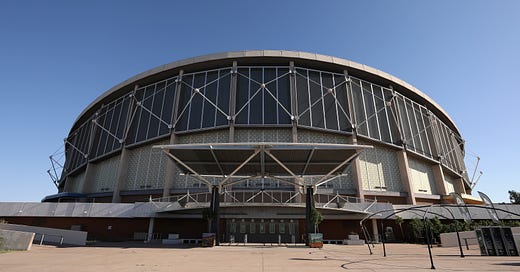


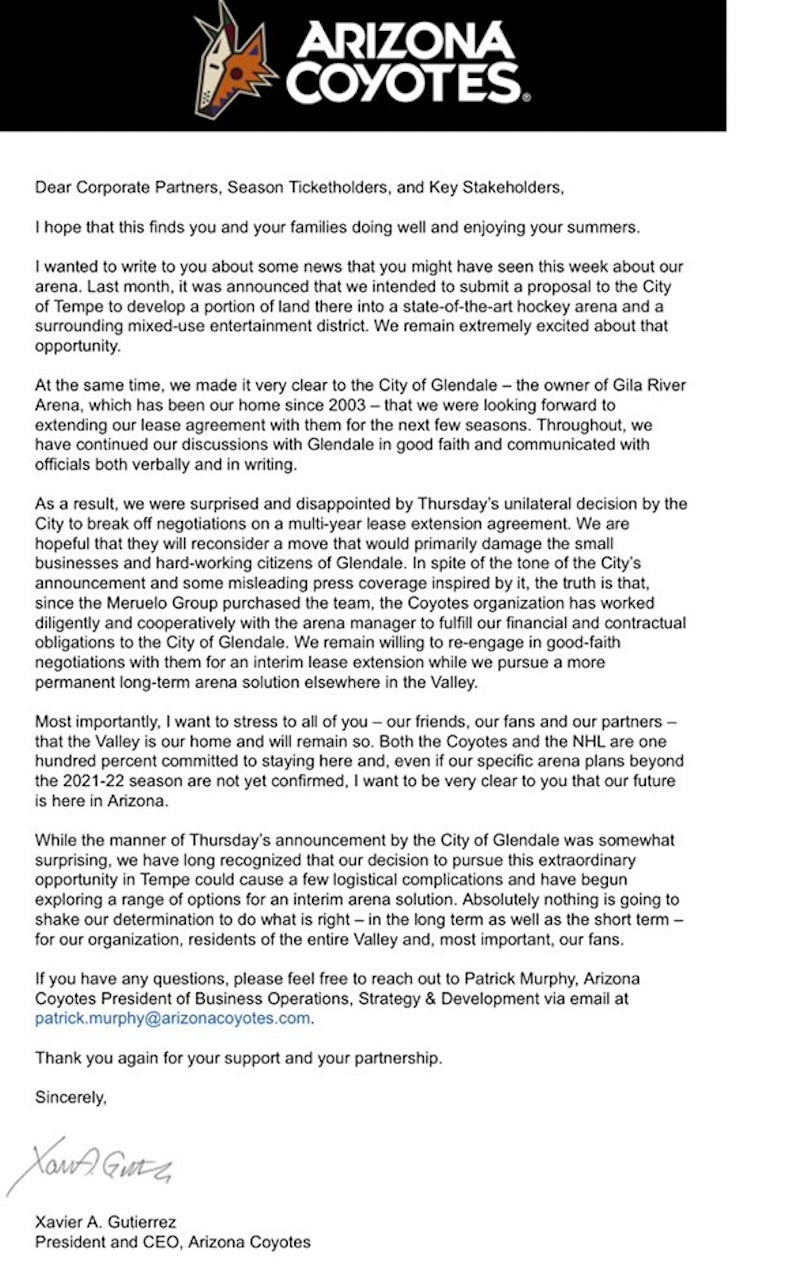
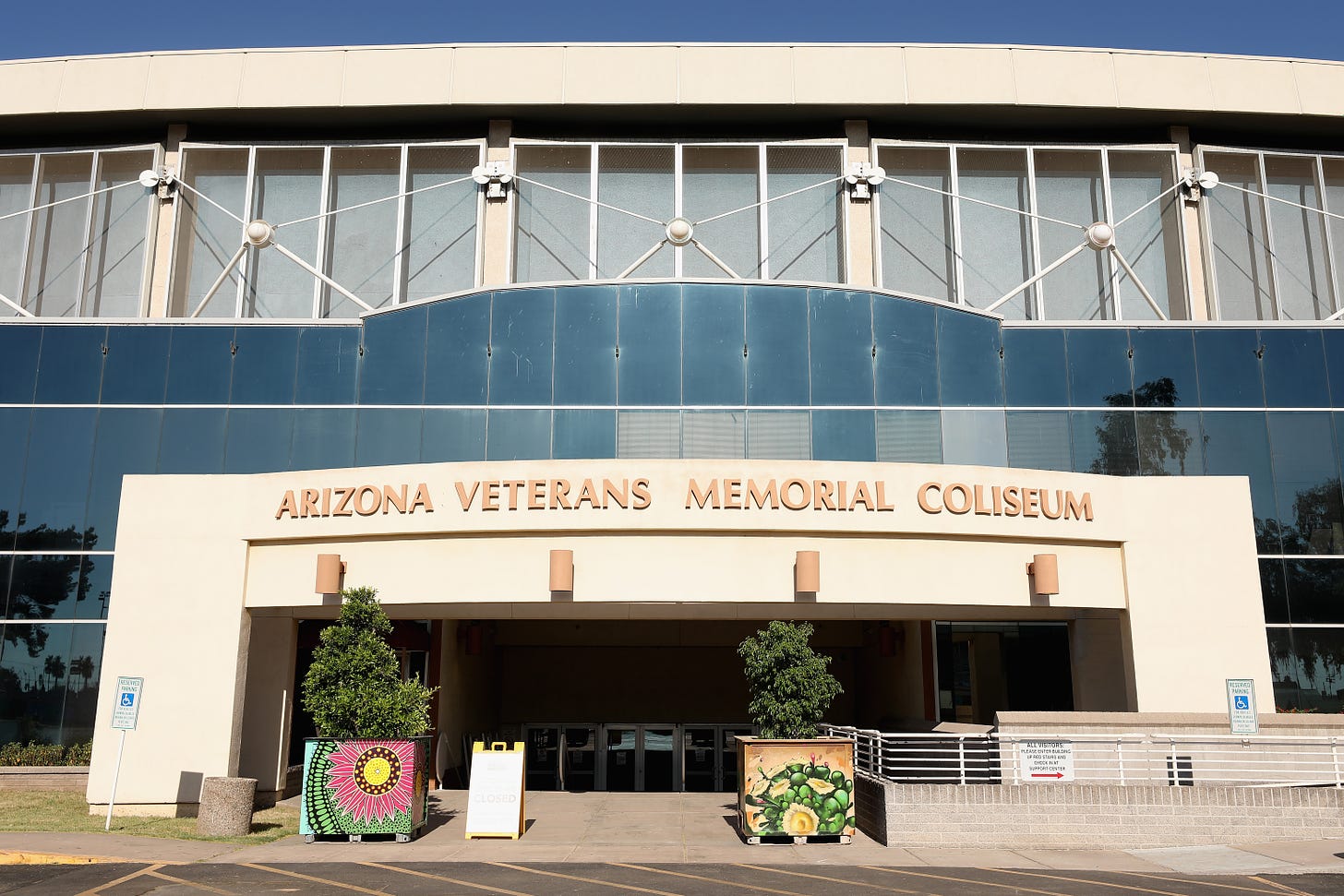
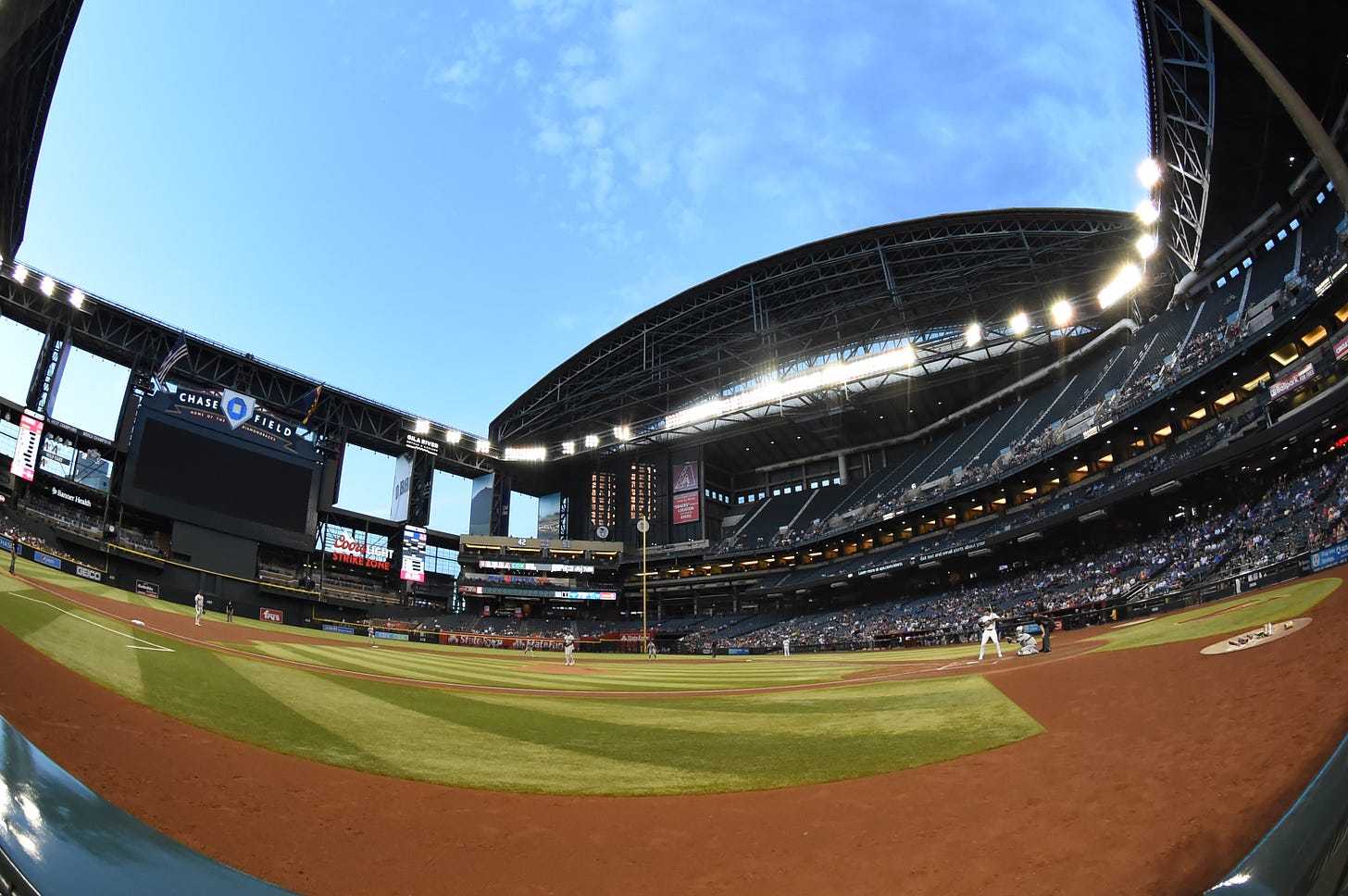

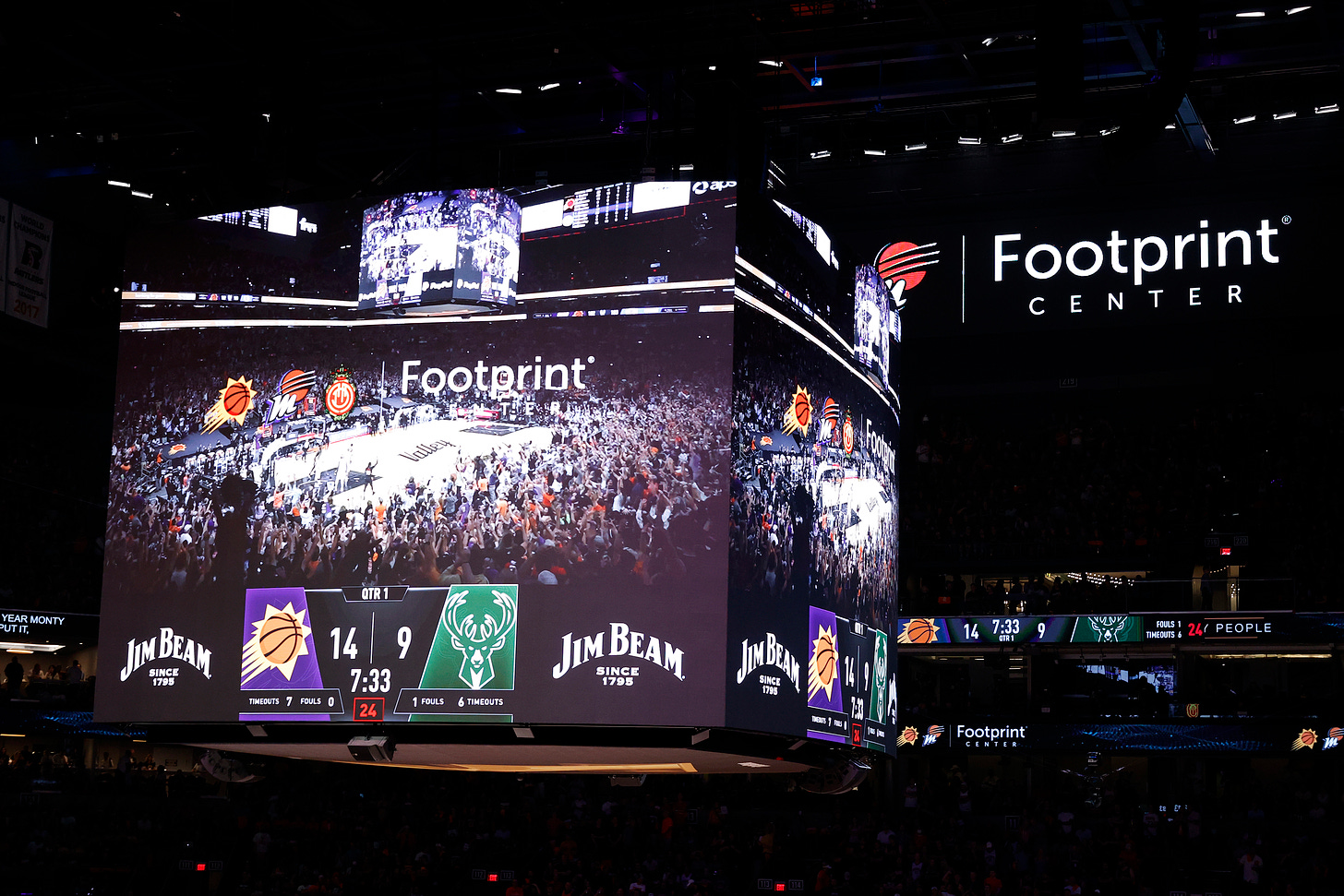
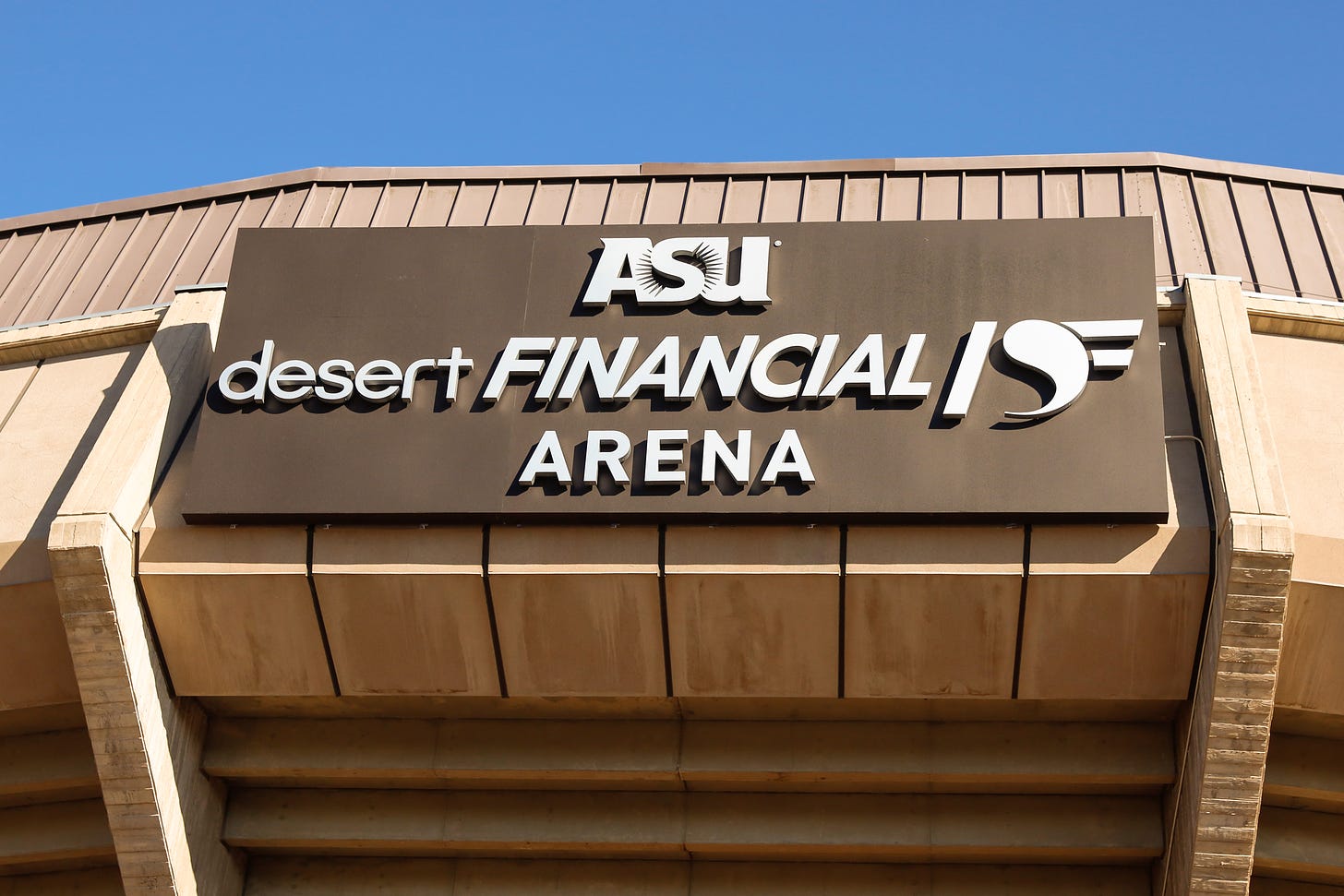
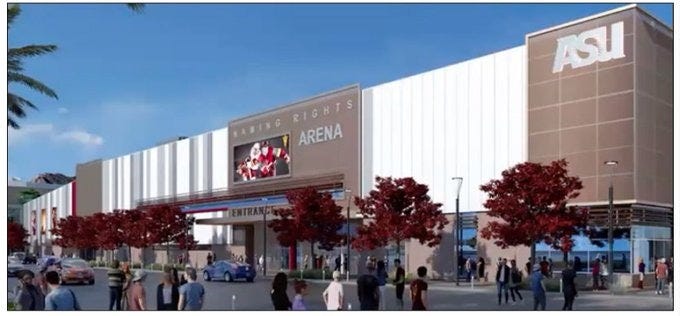
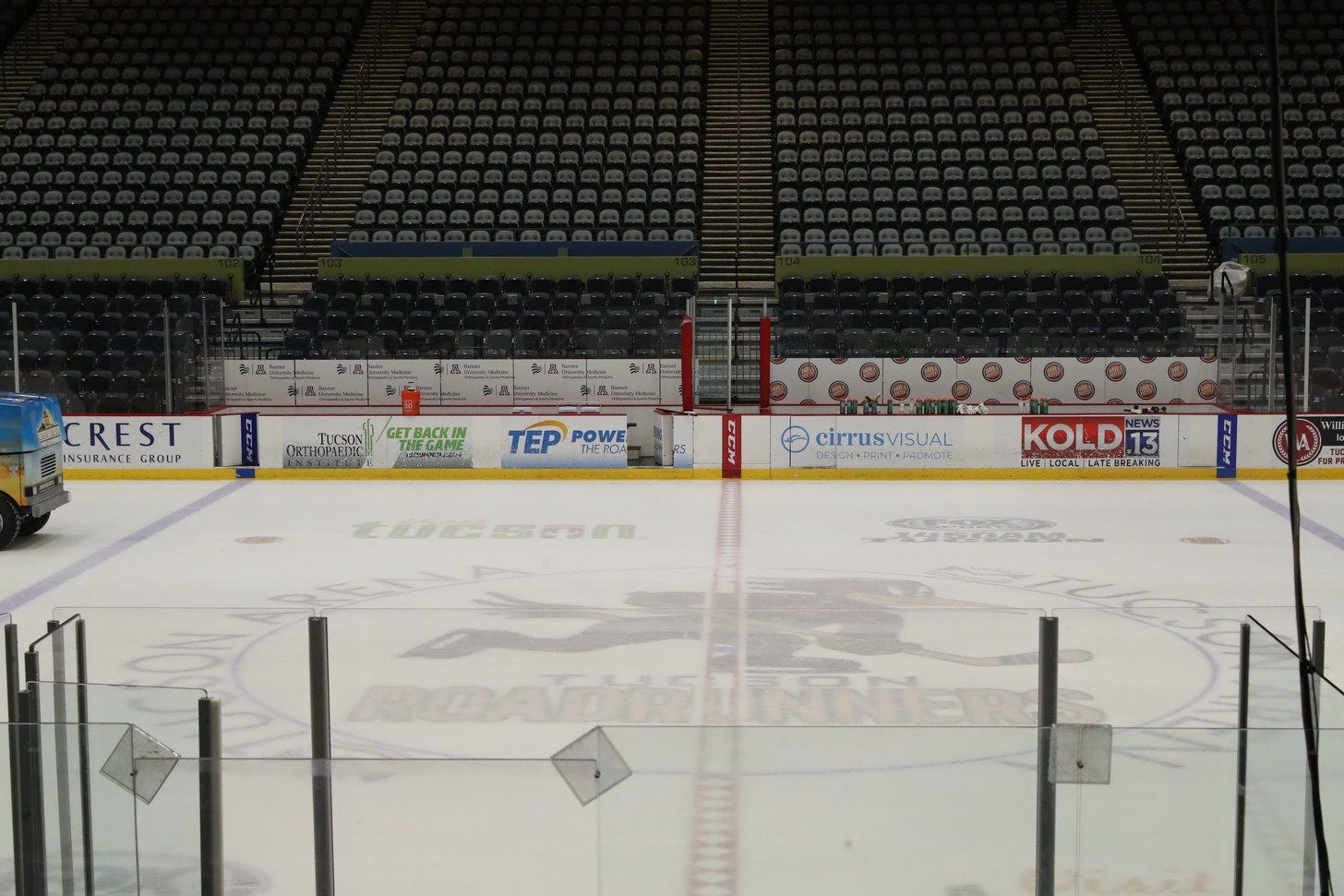
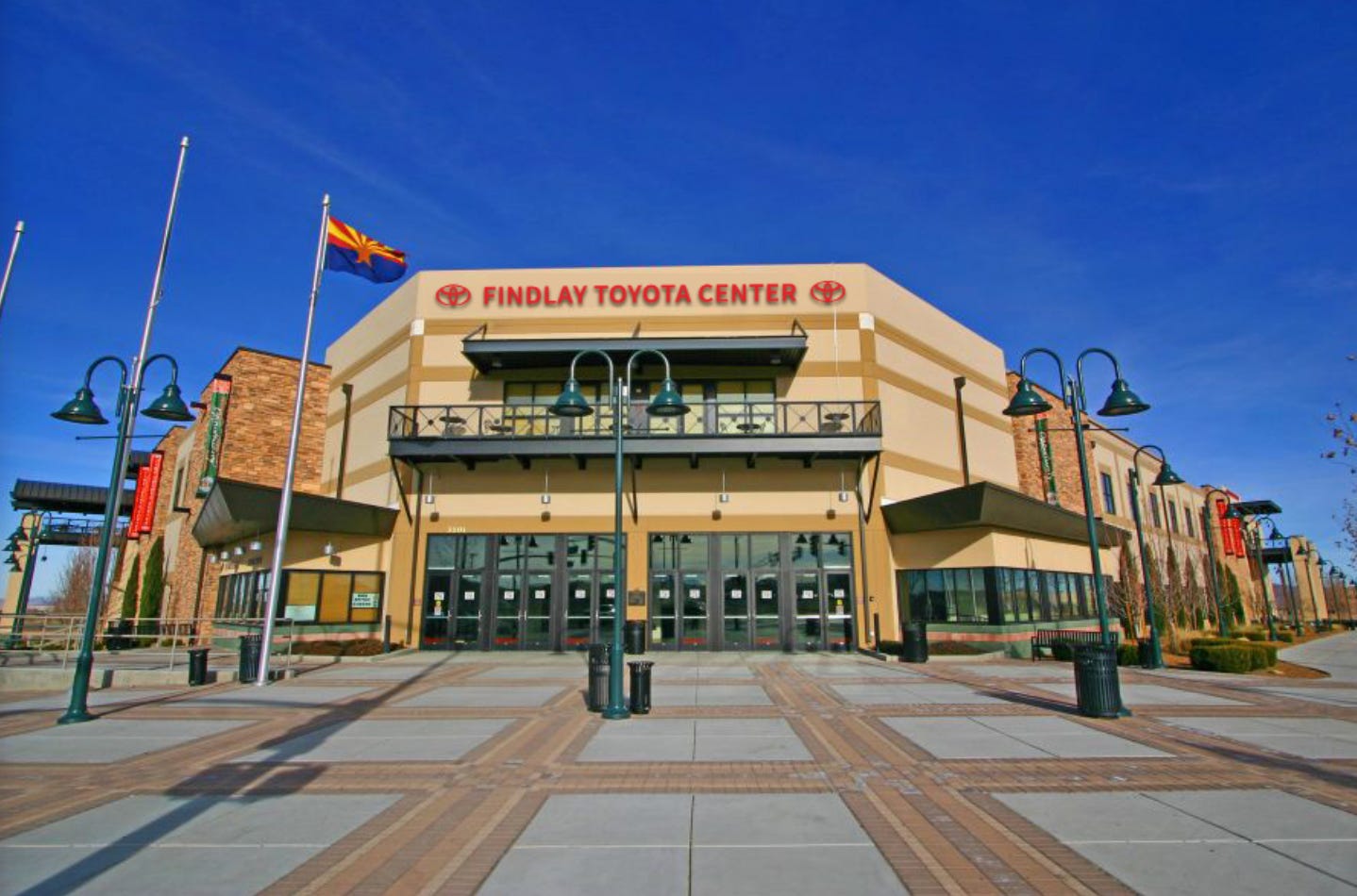
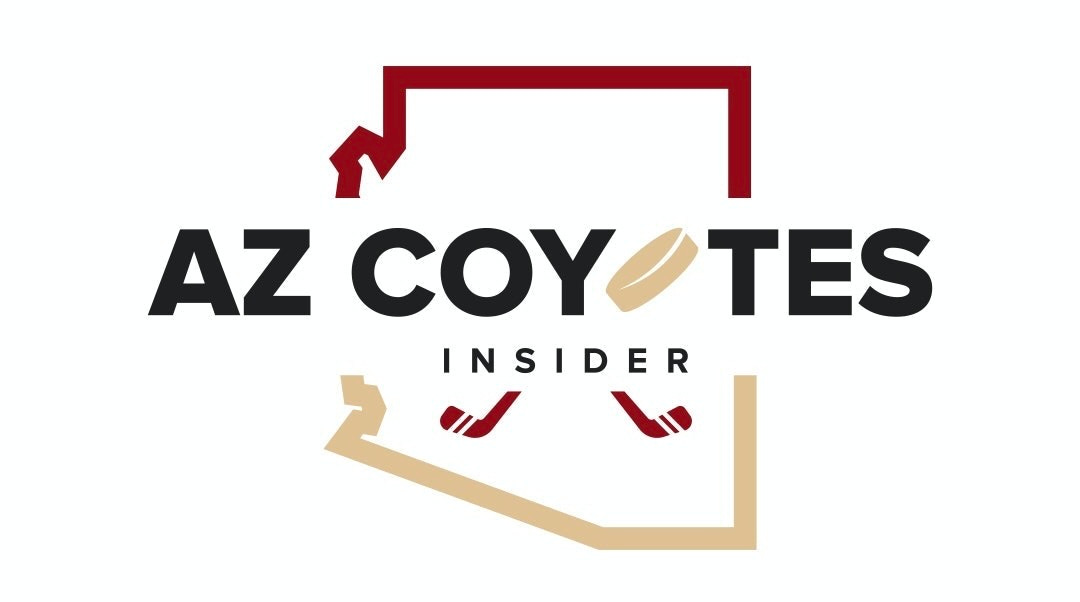
I am a full STH and received the letter. I will probably write a short email to Mr. Murphy. It will be why haven't the Coyotes paid their bills when they have a billionaire owner?
That bugs me.
Renovate the vet!